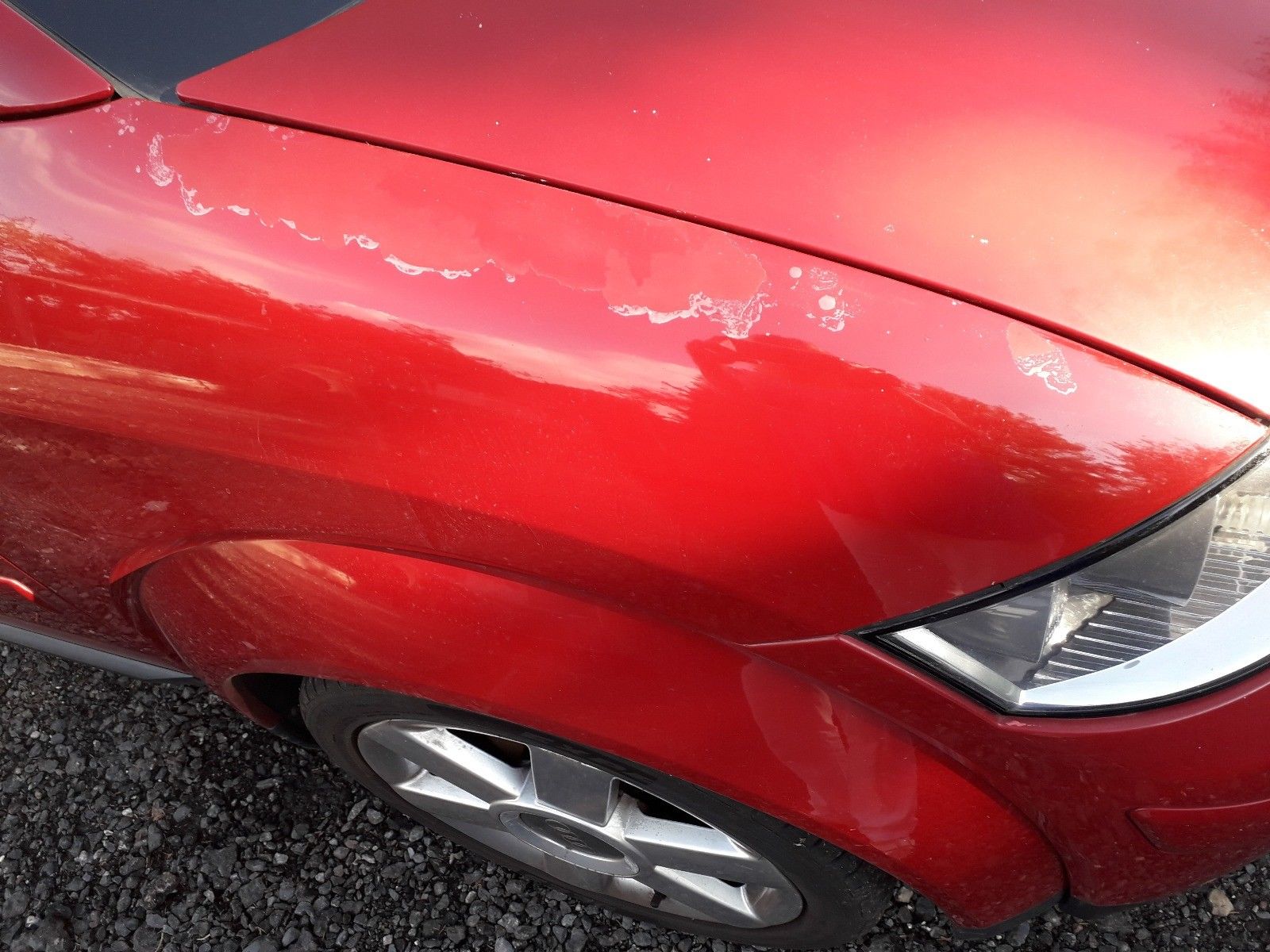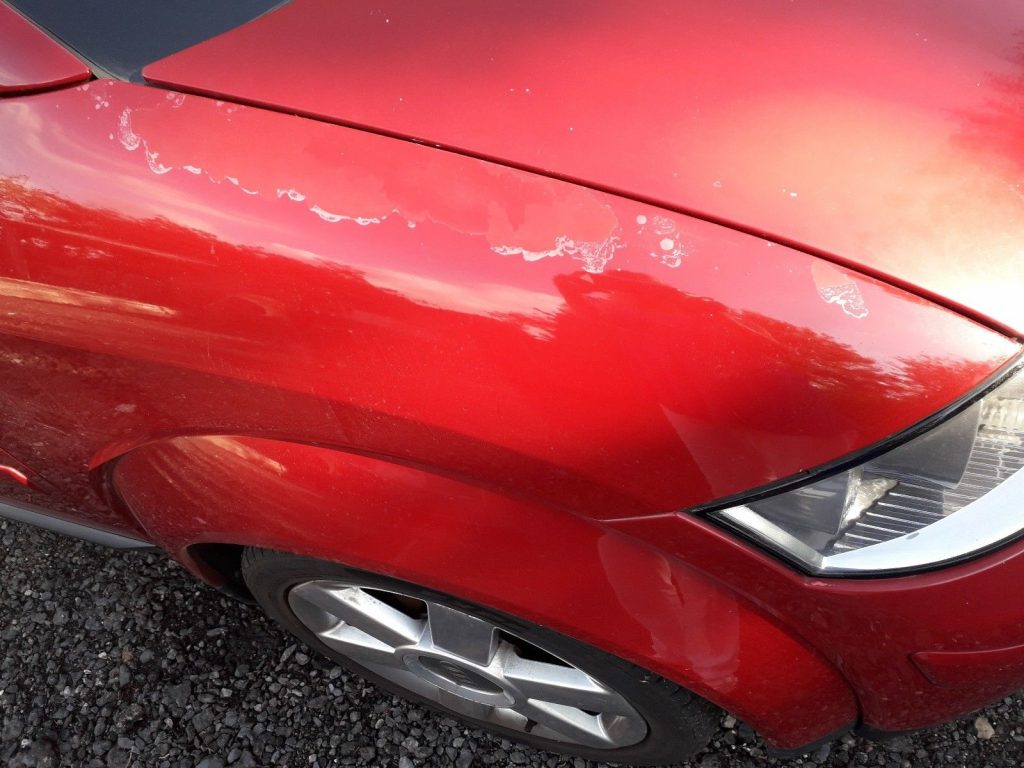A car nowadays with a flaking clear finish isn’t that unusual. Some single-stage paints peel straight off of the primer. Was this paint job poor, or was it caused by exposure to sunlight and weather? You must be wondering how to fix a peeling clear coat?
For your skin, vitamin D is terrific but not so much for your car’s clear coat. A faded or peeling clear finish is the inevitable result of exposure to the sun, aging, and other roadside detritus. Paint companies want to remove the entire car and reapply paint, which takes months and costs thousands of dollars.
Be it any case; In this article, you may learn how to fix a peeling clear coat.
What Exactly Does “Clear Coat” Mean?
The last coat of paint on your automobile is called a clear coat, and it is applied throughout the manufacturing process. Chemically, clear coatings are virtually indistinguishable from the paint on your car.
A number of the same ingredients that go into clay paint are also included in clear coatings. The main distinction is the absence of color in the clear coat, making it translucent. So it’s known as the “clear” coat.
Clear coatings preserve your car’s-colored paint and aid in keeping it shiny by shielding it from UV rays. Because transparent coatings are just two millimeters thick at most, their damage is common.

What Causes the Clear Coat to Come Off?
Without attention, the clear coat can become prone to pitting and scratching. In addition, the sun’s UV rays are the most critical factor. Car paint is steadily degraded by rays from the sun over time, leaving it with a harsh and white appearance. Leaving the base coat on for an excessively long period of time causes it to dry out.
Peeling can occur if the clear coat is applied too thinly, but if it is adequately bonded, it will not. When it comes to peeling, cheap paint is a common culprit since the layers don’t adhere to each other. The light may degrade the clear, but that won’t happen if the clear is attached to the base.
How To Fix a Peeling Clear Coat
As a reminder, you are not doing any work on the car’s clear coat. If the clear coat has peeled or flaked off, the damage is permanent and cannot be repaired. A good number of people don’t seem to get this. These people expect something truly magical, and we cannot provide it for them. So here’s what you should do in general to improve the appearance of your vehicle:
- Properly clean the panel that has been damaged. Ensure that any wax or extraneous particles that have penetrated your clear coat are removed.
- Use painter’s tape to construct a border around the damaged area.
- First, use 800-grit sandpaper to remove big flakes of the clear coat. Then begin by working from the outside in and working your way toward the center. Keep a careful touch as you approach the damaged area’s margins. The clear coat must only be removed to the extent necessary.
- Scrub the surface with an alcohol-soaked microfiber towel to eliminate any residue left behind after sanding.
- Before applying a thin coat, thoroughly mix the aerosol clear coat spray. Use a clean, dry cloth to wipe away any excess sanding dust.
- Allow at least five minutes for the first coat to dry before applying a lighter layer. You should repeat this method three more times.
- Allow at least two hours for the painter’s tape to fully dissolve before attempting to remove it. If you compare the new clear coat to the previous one, you should see a noticeable improvement.
- When the timer has run out, make sure the mended area’s edges are smoothed using finer sandpaper, such as 2,000 grit. You don’t need to go overboard in this area, as you’re only attempting to mix them together.
- To finish the job, use a buffer and some polish and buff it out. For best results, start with a low-power setting and gradually increase it as you make your way up.
- For best results, wait a few weeks before cleaning the region and adding a layer of wax.
Things You Don’t Want to Do
We advise you not to take the following actions:
- To restore luster to the peeling portions, spray WD40 on them.
- Restore a dull surface using scuff and scratch-removal polymers.
- Sharpen a razor blade to clean away the peeling edges.
- Apply a clear coat to the whole peeling surface.
- Clean up any sections of the vehicle where the clear coat has peeled off.
Preventing Peeling Clear Coat
Maintaining your automobile regularly might help you avoid costly repairs due to flaking clear coat. To protect the clear coat from the sun’s harmful rays, regular waxing might be beneficial by forming an invisible barrier. Car wash soaps, clay bars, and waxes might make a vehicle seem cleaner, but the damage will likely still be evident on the surface.
While regular washing and waxing can help prevent clear coat deterioration, these chemicals can have little effect if used after the damage has already taken place. After thoroughly cleaning and drying your automobile and removing any bonded impurities, it’s time to apply a UV-blocking coating. Stopping oxidation and peeling starts with this step.
And don’t forget that auto wax isn’t indestructible. It only gives UV protection for as long as it is used, washed, and exposed to the elements. When you clean your automobile, pay attention to the movement of the rinse water.
As always, keep an eye out. What your automobile requires will be communicated to you.
Conclusion
There is no one-size-fits-all solution. Sanding and repainting may be the only technique to restore a flaking clear coat. You may see minor defects and transition lines in the new clear coat, but that’s part of the deal.
If you don’t know where to search for the seams, a 95% improvement will still make your automobile appear spectacular. Whatever path you choose, keep in mind that if something happens once, it will most likely happen again. If you use a paint protection product, you won’t have to worry about this for the time being. We hope this article was informative enough to give you the knowledge about how to fix a peeling clear coat.


